You’ve always wanted to climb Kili, but you’re not sure if you’ll be able to summit. If this sounds familiar, you’re not alone. Mount Kilimanjaro is the world’s tallest freestanding mountain, and as such, trekkers need to prepare accordingly.
Fortunately, many Thomson staffers have climbed the mountain and offered their unconventional advice for summiting. Read on to learn some our favorite tips for climbing Kilimanjaro!
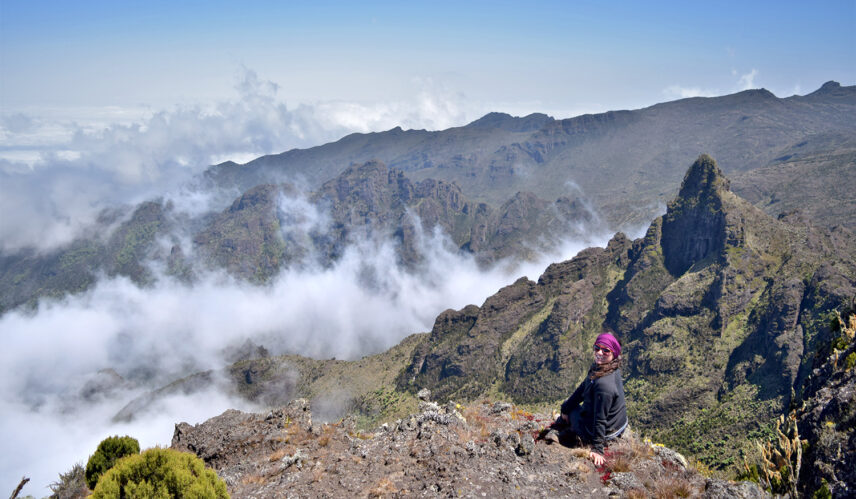
1. Walk slower than you ever have before.
“Slow and steady is key on Kili. You need to hike at a much slower pace than you’re used to, and you can see it in the deliberate steps of the guide leading the pack. Your natural inclination is to rush to the front to show your strength, but I encourage you on Days 1 and 2 to actually walk with the guides and porters in the very back of the line.”
– Carolyn Hardy,
Senior Safari & Kilimanjaro Consultant
2. Get to know the crew.
“The guides and porters on your trek are so full of energy, knowledge, and humor. They’re eager to learn about you, and want to share their personal stories as well. This helps set the tone for the trek – you’re all in it together. The crew’s friendliness right from the start filled me with positive vibes and overwhelming support, and that’s why I recommend establishing camaraderie early on.”
– Carolyn Hardy,
Senior Safari & Kilimanjaro Consultant
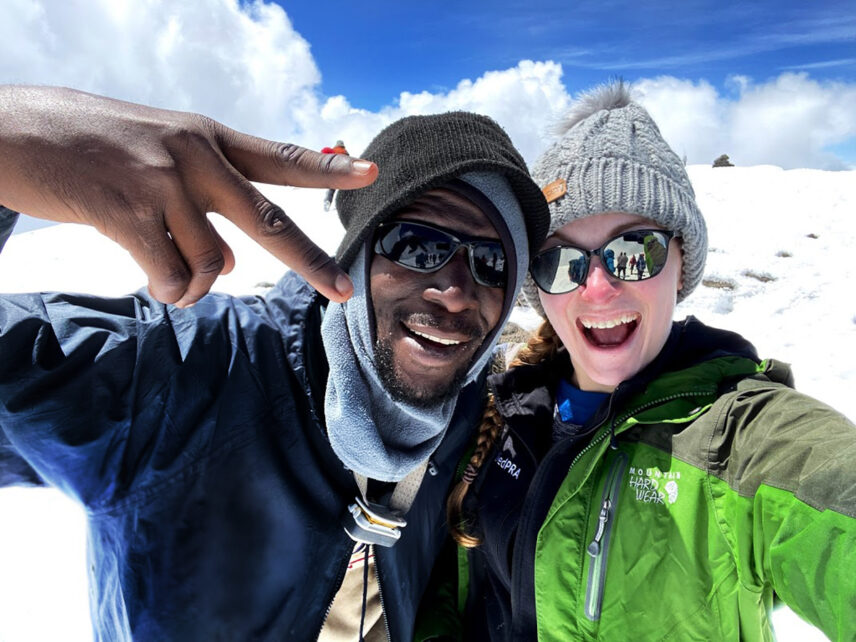
Carolyn with guide MC near the summit
3. Be sure toe nails are cut close.
“On the way down the mountain, your feet get pushed into the toe of your boots, and if your nails are long, they will bruise – not to mention, it will be uncomfortable. Before leaving for your trek, trim your nails as closely as possible so you can walk comfortably.”
– Rick Thomson, Co-founder
4. Store your boots in your sleeping bag every night.
“Place your boots in a stuff sack and tuck them into the foot of your sleeping bag. In the morning, you’ll have nice warm boots to put on, and there’s nothing better than starting the day with warm feet!”
– Rick Thomson, Co-founder
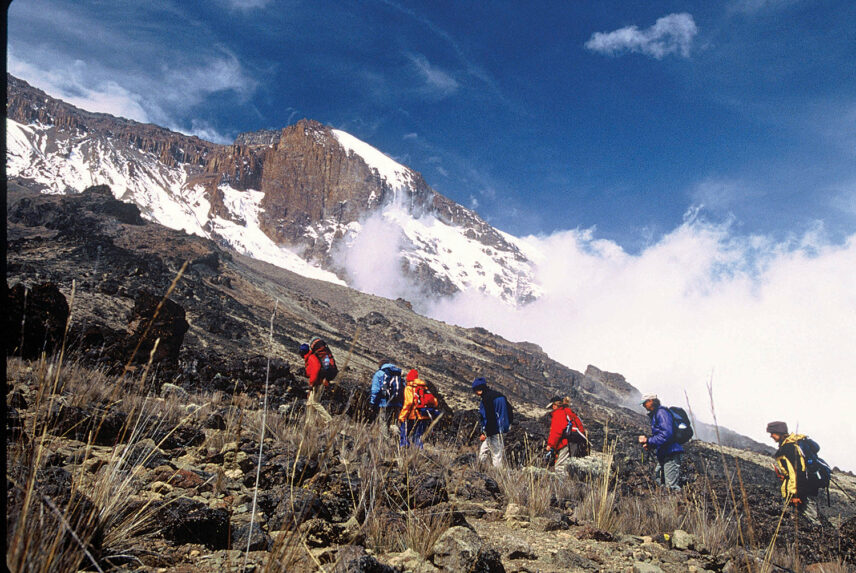
Rick trekking with daughter Nicole during the filming of IMAX movie “Kilimanjaro: To the Roof of Africa.”
5. Make a Kili playlist.
“I had a playlist on my iPod for summit day as a just-in-case motivational item. I ended up using it just for the climb up to Stella Point. Having positive, upbeat music ready to go, even if I didn’t need it, was tremendously helpful.”
– Lewis Crary,
Senior Safari and Kilimanjaro Consultant
6. Keep things in perspective.
“I compared the trek to other things I had done. If we had an eight-hour climb, I’d tell myself ‘well, you’ve run a half marathon, and two-and-a-half hours of running is harder than walking, so you can definitely do this.’ As an added bonus, this tactic now works in reverse while running: “You’ve climbed Kili; you can absolutely do this!’”
– Angela Woods, Manager of Guest Services
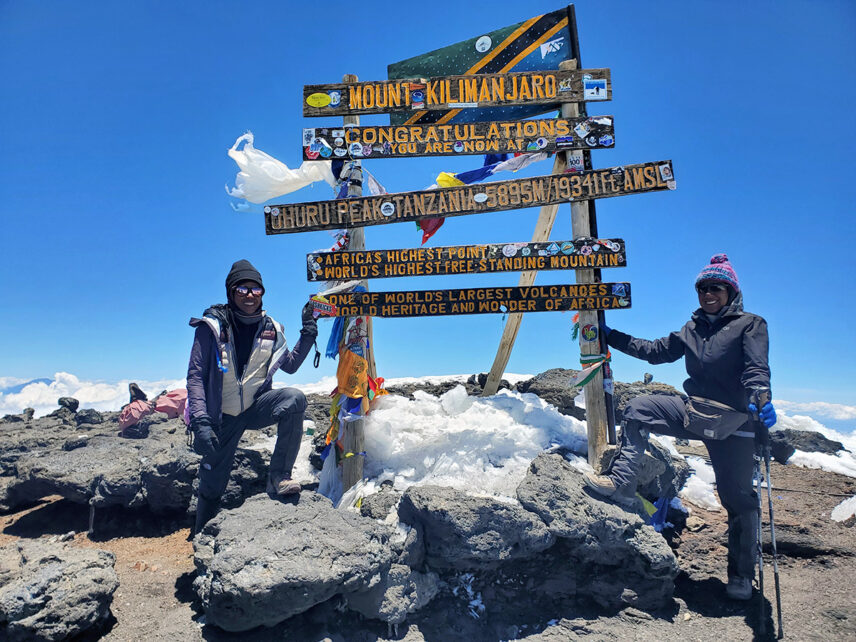
Angela at the summit with her sister
7. Want it more than anything.
“Every morning when you wake up on the trek, you’re tempted to think that something hurts or that you want to sleep more. Every morning I woke up, I thought ‘I worked so hard for this, and I am ready.’ Mental preparedness is, I think, almost more important than the physical aspects. Doing long workouts alone ahead of time can help your mental stamina. And it might sound cliché, but you really need to love every step for what it is – a journey. You won’t regret it.”
– Lewis Crary,
Senior Safari and Kilimanjaro Consultant
8. Establish a nightly routine.
“Do two things before you go to bed on a cold night – use the bathroom and workout. Relieving yourself will save you from wasting energy on keeping that liquid at body temperature, and it will also mean you’re less likely to need to get up in the middle of the night when things get really cold. Doing a couple of burpees or sit-ups before bed increases both your heart and breathing rate, generating heat, so as you hop into your sleeping bag you’ll feel nice and toasty. You don’t want to work up a sweat; just do enough to get the blood pumping!”
– Angela Woods, Manager of Guest Services
9. Repeat a positive mantra.
“In our group, we repeated the phrase ‘nguvu kama simba,’ which is Swahili for ‘strong like lion.’ This helps keep you positive and out of your own head, which is half the battle. If you can keep your mental outlook positive, there is a great chance you can overcome many of the physical challenges.”
– Halee Mahoney,
Senior Safari and Kilimanjaro Consultant

Angela in the Barranco Valley
10. Don’t look too far ahead.
“On the mountain, things look much closer than they actually are. Instead of looking ahead, look at how far you have come. Looking back toward camp helps to put it in perspective, as camp gets smaller and smaller.”
– Sean Fiandaca, Director of IT
11. Bring something meaningful with you.
“I brought one of my grandfather’s handkerchiefs with me. I would draw strength from it when I was finding things were difficult. It helps keep you positive and focused on your goal.”
– Sean Fiandaca, Director of IT
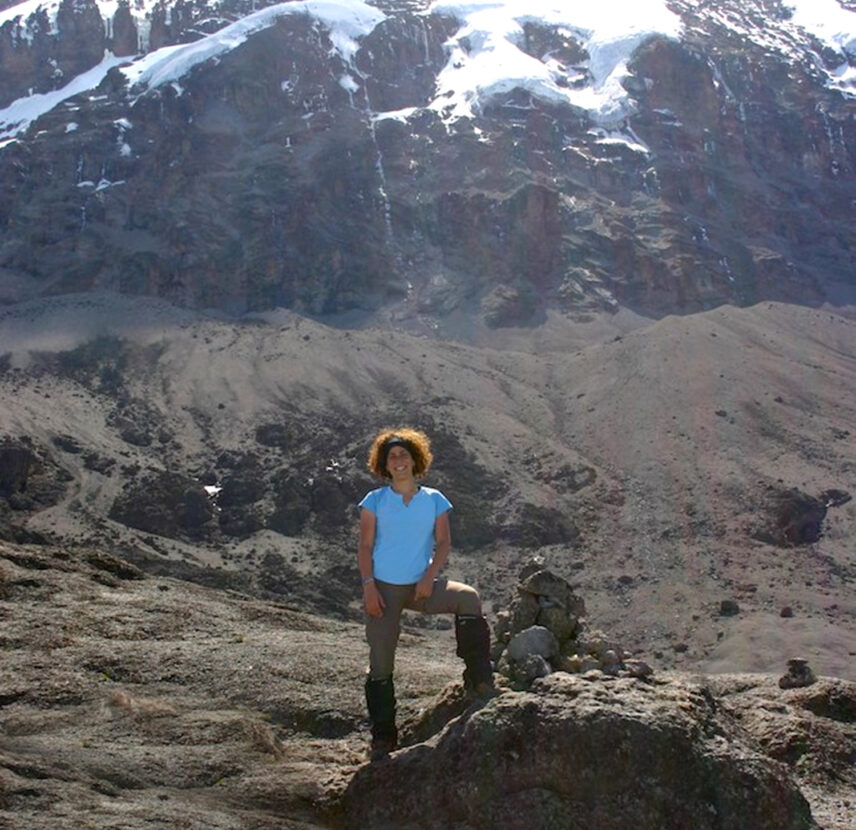
Ali at the top of the Barranco Wall
12. Visualize the summit.
“Start visualizing the summit long before you set foot on the mountain. Throughout my training—and even while sleeping, eating, and breathing—I kept a vivid mental image of the summit sign and of myself walking toward it. It might sound obsessive, but visualization the goal is a classic technique that has always worked out well for me in sports and training.”
– Ali Riley, Creative Director
13. Be present.
“I took the time to smell the giant Scenesio trees and take in the varied landscape, which changed every day. I got absorbed in the majesty and vividness of constellations above me at night. This planet is amazing, and focusing on all of the beauty surrounding me helped me immensely throughout my trek.”
– Ali Riley, Creative Director
Ready to Trek Kili?
Whether you’re halfway through your training or just starting to dream about Kilimanjaro, these unconventional tips come from people who’ve been there—and made it to the top. Let their experiences inspire your own journey.
